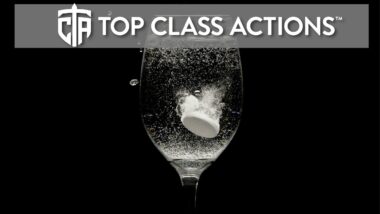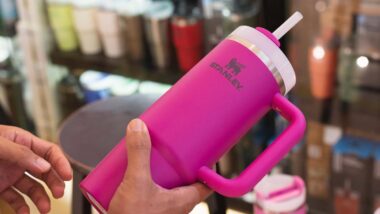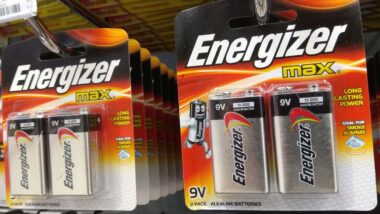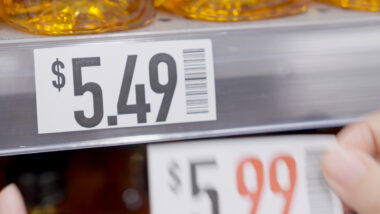Top Class Actions’s website and social media posts use affiliate links. If you make a purchase using such links, we may receive a commission, but it will not result in any additional charges to you. Please review our Affiliate Link Disclosure for more information.
Trinity Industries, maker of the Trinity guardrail, is under legal fire for a design change that has purportedly contributed to several traffic deaths and dismemberments.
According to reports, the industrial manufacturer allegedly looked to cut corners on parts of a highway guardrail system known as railheads or terminal ends over a decade ago. Trinity guardrails have been the subject of at least a dozen lawsuits by seriously injured survivors or surviving family members of those killed in some of the accidents.
At issue is a design change made in 2005 to the ET Plus highway guardrail end treatment. The width of the steel channel behind these end treatments was narrowed from five inches to four.
There are estimated to be about 500,00 Trinity guardrail systems in place with end treatments installed across all 50 states in the U.S. It is not known how many of these units have this newer design, which was allegedly never reported to the Federal Highway Administration.
How the Change in Trinity Guardrails Has Been Implicated in Accidents
Review of the case against Trinity Industries has allegedly revealed internal documentation that supports an attempt on the company’s part to keep the design change purposely secret. The company, on the other hand, maintains the failure to report was an oversight. Other internal documentation estimates the one-inch shave would save the business as much as a quarter of a million dollars over a five-year span.
Guardrails or any stationary object along the side of the road can prove to be a dangerous entity, and the optimum situation would always be to use shoulder space to reorient the vehicle if that is an option. Where guardrails have proven to be necessary, proper end treatments are supposed to be designed to allow the energy absorption of a 62 mile-per-hour hit. This video from The New York Times shows how guardrail end systems are supposed to work:
What has allegedly happened in cases involving the redesigned highway guardrail end treatment has been that it has not been able to absorb this energy. In ideal circumstances, this piece would allow for the w-shaped guardrails to peel away like a banana from the vehicle. In accidents where the end treatments have been implicated, the rails have instead remained rigidly in place during the crash, impaling the vehicle and often the driver and his or her passengers.
Among the situations that the end treatments in question have purportedly caused include the double leg amputation of a North Carolina man who fell asleep behind the wheel, the death of a Missouri father after he was impaled through his driver-side door, multiple bone breakages of leg, arm, pelvic cage and spine of another North Carolina driver, and dismemberment of the right leg of a Pennsylvania single mother.
Trinity Guardrail Whistleblower Lawsuit
In 2012, Joshua H., a Trinity competitor, filed a whistleblower lawsuit against the company under the False Claims Act, a federal law that allows private citizens or entities to bring legal claims on behalf of the government. Reuters reports that according to the plaintiff, Trinity defrauded the federal government by failing to inform them of the changes they made to their guardrails.
In 2014, a federal jury in Texas found that Trinity was guilty of the alleged actions and granted the plaintiff (and the government) a $663.4 million judgement. The judgement included $525 million (triple the government’s reimbursement for the guardrails as allowed by the False Claims Act) and an additional $138.4 million in civil penalties.
Although this judgement was a win for Joshua, the 5th Circuit Court of Appeals overturned the judgement in 2017. The 5th Circuit found that, because the Federal Highway Administration continued to reimburse Trinity for the ET-Plus after hearing Joshua’s claims, he couldn’t claim that Trinity’s misstatements had a notable effect on the government’s decisions.
More recently in January 2019, the U.S. Supreme Court rejected Joshua’s attempt to revive the verdict. Trinity says that this decision “confirms the company’s long-standing belief that no fraud was committed,” but Joshua disagrees.
“We are disappointed, but believe the true objective of the case has been achieved. Because of [Joshua’s] efforts, there is more federal and state scrutiny than ever before to ensure the safety of our nation’s roads and highways,” one of Joshua’s lawyers said, according to Reuters.
Have you been in a car accident involving a Trinity guardrail end treatment that resulted in severe injuries? Do you have a loved one that passed away because of such an impact? You may have a legal claim, regardless of whether you had any fault in the accident. Fill out our form to request a free initial legal consultation.
If you were catastrophically injured in a car accident when your vehicle hit a highway guardrail end, or if your loved one died in a guardrail crash, you may qualify to file a highway guardrail lawsuit, regardless of why the crash occurred.
ATTORNEY ADVERTISING
Top Class Actions is a Proud Member of the American Bar Association
LEGAL INFORMATION IS NOT LEGAL ADVICE
Top Class Actions Legal Statement
©2008 – 2024 Top Class Actions® LLC
Various Trademarks held by their respective owners
This website is not intended for viewing or usage by European Union citizens.
Get Help – It’s Free
Join a Free Trinity Guardrail Lawsuit Investigation
If you qualify, an attorney will contact you to discuss the details of your potential case at no charge to you.
PLEASE NOTE: If you want to participate in this investigation, it is imperative that you reply to the law firm if they call or email you. Failing to do so may result in you not getting signed up as a client or getting you dropped as a client.
Oops! We could not locate your form.













